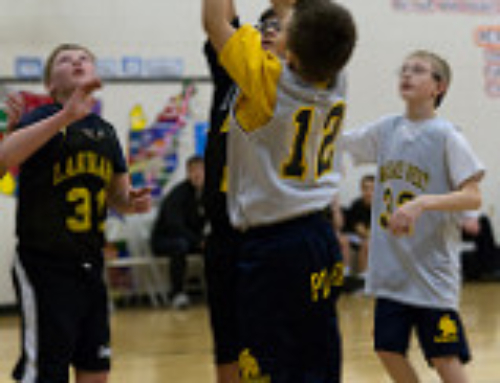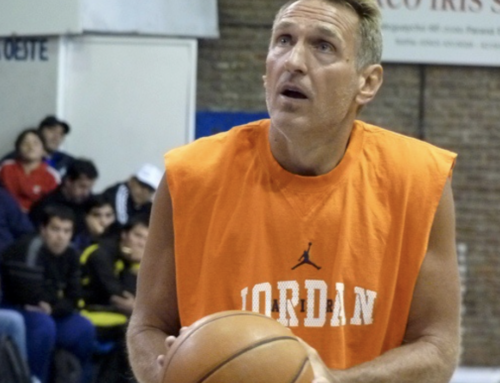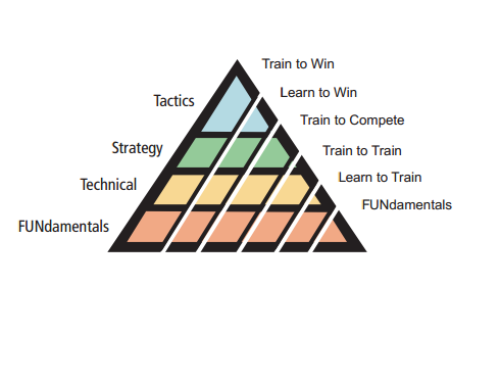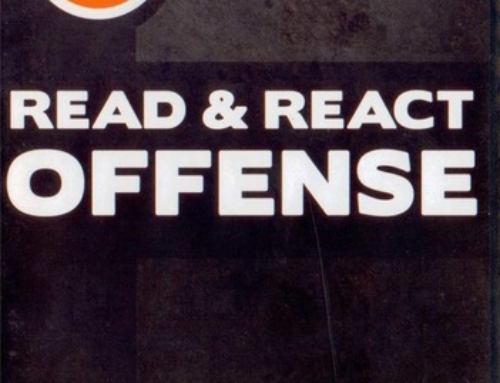Most parents hang kids school papers on the refrigerator, but mine were different. Our fridge had some awful looking off-white, lined paper that had corners missing and had less ink on it now than most new paper. It wasn’t some A I got a paper in school or a 100 on a spelling test, but rather a simple white lined paper which hung from our refrigerator.
It contained nothing magical and nothing secretive. There was nothing on it about the Princeton offense, reading screens, or even proper footwork. What was on it were simple thoughts and principles that helped put me in the right mindset to be able to play with the minimalist of energy. It paired down the game to a bare minimum with things like:
- Use both hands
- Change speed and change direction
- Pay attention to space
Recently, I read one of the most influential books I’ve ever touched: Stephen Covey’s Seven Habits of Highly Effective People. The fascinating thing about this book is that it “helps” to “guide” you in finding what it is that is needed to make yourself happy, complete, and successful. It doesn’t tell you to do X on day 1 and Y on day 2. But what it does do is give you principles to help figure that out.
As I reflected back on 15+ years of competing in basketball I couldn’t help but think that a quick checklist (much like my father made for me) would be helpful. The beauty of this checklist is that you don’t have to be a star to apply the principles. You don’t have to run a motion offense or play man to man defense. The principles I outline below can be applied to any shooting guard regardless of height, speed, shooting ability, or athletic giftedness. Enjoy.
Habit 1: Know where you’re best. As simple as it sounds, one of the biggest differences between high level shooting guards and “good” shooting guards is often a difference of understanding. Good shooting guards take whatever the defense gives them. High level shooting guards find ways to get the shots that they’re best at. Put yourself in the positions on the court where you’re most successful. If you like receiving the ball coming off of the left wing, find ways to set yourself up there more often.
Habit 2: Get good at the opposite. If you’re great at going right, get great at going left. Love to shoot a pull-up? Get great at catching and shooting. For every move you have you need a counterpart that compliments the move. If you drive to your right effectively add a pull-up to your game. You don’t need lots of moves, you just need to be really good at a few moves. If you have a good catch and shoot going right, make sure you have one going left. If you can drive to the basket, work on a pull-up. Oh, and did I mention these should be in your most effective positions on the court? Refer back to habit 1.
Habit 3: Fast Food Theory. When you go into grab a quick meal at McDonalds you don’t have the cashier guess what your order is do you? No, of course not! You tell them what you want. As a shooting guard you have to be the same way. If you like the ball on the left wing, tell your point guard, tell your coach (who should already be aware of this) and tell your teammates. Don’t make them guess where you want the ball, tell them. Make sure you’re constantly communicating to your team on where you like the ball; what shots you prefer; what type of pass, etc. While they seem like little things, it’s important to make the game as easy as possible for everyone, including yourself.
Habit 4: Master the Mid-Range. Lots of coaches these days tell kids to practice 3-point shots, free throws, and dribbling. Very few coaches (including some college coaches) remember to teach kids the art of the mid-range game (12-15ft.). The mid-range game is the toughest to defend for a few reasons: 1) Since very few players are good at using it offensively, rarely do they have to defend it anymore. 2) Since there are a lot of shots and moves which can be used in that area, it makes it tough to know how close to defend someone. 3) Defenders are taught to contest outside shots and stop lay-ups, no where/rarely is it mentioned what and how to stop pull-up jump shots and floaters. If you can make open shots on the perimeter, have the threat of taking the ball to the basket, and then have the ability to pull-up in between both of those…you are nearly impossible to defend.
Habit 5: Learn how to Read Space. I tell basketball players that I work with that they aren’t open if they can’t receive the ball. That means that just because you don’t have someone within 10 feet of you doesn’t mean you’re open. In order to be “open” learn to make yourself available to the basketball. That doesn’t mean you have to be close to the basketball, but rather you have to have space to move into in order to receive the basketball. Learning to read space takes practice (video demonstrations can be seen on www.theunguardables.com), but most importantly it takes an awareness. Pay attention to the movement during the game of basketball. In simple terms: people moving into space “takes” it, and people moving out of space “opens” it. Watch people and learn how to move into space after people make cuts, come off screens, and penetrate.
Habit 6: Learn to Score without Dribbling. If you want to be on the wings you need to learn how to score without having to put the ball on the deck. This includes reading screens and catching and shooting, but it also means that you must learn how to use jab steps, pivots, and ball/eye fakes. If you have to put the ball on the floor every time to create a shot you’re going to be very ineffective on the wing. As soon as the help defense sees you dribble they are going to be ready to help. Learn to create your shots without dribbling and simply based off of how the defense plays you. If you want two great examples: Carmelo Anthony and Kobe Bryant.
Habit 7: Simplify your Shot. One of the best ways to become a more consistent (and quicker) shooter is by simplifying your shot. Make sure that every time you catch the ball you catch it in the shooting pocket with your arm angles already set (i.e. elbow bend already set). It also helps to learn the “bottom” position of your shot so that you aren’t too high or too low when you’re trying to get rid of the ball quickly. I usually have people go to about a 1/2 squat and then adjust from there (bend your knees and lower as deep as you can go, now come back up about half way – this should be your hypothetical 1/2 squat). I always tell players that if you want to make more shots you should simplify what it is you’re doing. The more “things” you have going on with your shot, the more that can go wrong; usually that equals inconsistency.
If you learn to master the above 7 habits you will be one very efficient and effective shooting guard. You won’t have any holes in your game (offensively at least), and you’ll find that it’s a whole lot easier to dominate a game that you actually think. Start by trying to implement one habit at a time; don’t worry about bringing the next habit in until you make sure you can do the first habit without having to think about it. Once the habit is “habit,” you can move on to the next one. By the time you finish implementing all 7 habits your game will be at the next level!
Shelby Turcotte is a peak performance coach for basketball. He has trained hundreds of athletes and basketball players ranging from youth through professional. His site, www.theunguardables.com is geared towards helping the serious basketball player learn how to make themselves a better player, teammates, and person.







Hi great article. You mentioned that I could find
Learning to read space takes practice (video demonstrations can be seen on http://www.theunguardables.com)
Where exactly can I find this info
Thanks
Coach Greg Roque Verdugo Hills High girls basketball